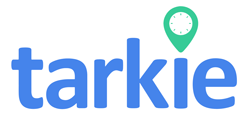Remote work is becoming more common. Have you thought about how safe your attendance data is? In today’s digital world, keeping attendance data safe is more than just basic steps. This article will look at key practices for keeping remote work data secure.
It focuses on small and medium-sized enterprises (SMEs) in the Philippines. They can use effective strategies to protect their data from cyber threats. With over 70% of employees learning about data security, awareness is important. Yet, 60% of data breaches come from human mistakes, so better training and security are needed.
Companies can protect their remote worker attendance data by taking a complete approach to data protection. This ensures the data’s safety and boosts productivity. We will explore the main security challenges and strategies to strengthen your remote work environment.
Key Takeaways
- Understanding the vulnerabilities of remote work security is critical in today’s digital landscape.
- Employee training can significantly reduce the risk of data breaches caused by human error.
- Implementing strong security measures is essential for protecting attendance data.
- Utilization of HR software aids in compliance and enhances data protection.
- Regular cybersecurity training can lead to a notable decrease in incidents.
- Adopting robust security protocols helps safeguard against potential threats.
Introduction to Remote Work Security
The shift to remote work has changed how companies operate, mainly in the Philippines. As people work from home, keeping data safe is more important than ever. Home networks often don’t have the same security as work networks, making them vulnerable to cyber threats.
Protecting data is crucial for companies to keep their clients’ trust and stay safe. If security is not up to par, companies could face big problems like data breaches and financial losses. Setting up strong security measures is key to fighting off cyber threats that come with remote work.
Using two-factor authentication (2FA) can greatly improve remote work security. This extra step makes sure only authorized people can get to important data. It’s also important for companies to teach their employees about cybersecurity, check their systems regularly, and review who has access to what.
With more use of digital tools and collaboration platforms, keeping everyone informed about cybersecurity is crucial. Having automated backup and recovery plans can also help protect data. This way, companies can quickly respond to any security issues that come up.
Understanding Attendance Data in Remote Work
In the world of remote work, knowing who is working is key. This data helps track who is on the job and who isn’t. It’s crucial for keeping everyone on the same page and making sure work gets done.
Many teams still use old-school timesheets. But, these can be wrong, as people might forget their hours by the end of the week. Punch cards are also outdated, as they can be faked by swapping IDs. This shows we need better ways to track who’s working.
Biometric clocks might seem like a good idea, but they don’t work for everyone. We need systems that work for everyone, like apps on phones. Over 9,500 companies use tools like ActivTrak to keep tabs on who’s working.
Companies must follow rules about keeping track of work hours. In places like the Philippines, it’s important to log all kinds of work hours. Systems can help with this, making it easier to keep records and pay employees right.
Using systems that handle leave requests makes things easier for everyone. It also helps managers spot problems early, like if someone is always late or sick. This helps keep the workplace healthy, which is even more important with more companies working from home.

Common Security Challenges in Remote Work Environments
Remote work brings unique challenges, affecting data security threats greatly. The move to virtual workplaces has changed how companies work. This has led to more vulnerabilities.
A big issue is that 60% of remote workers use personal devices. These devices often don’t have the security measures company devices do.
Many employees use public Wi-Fi, which is not secure. This can lead to unauthorized access and data leaks. Without someone watching over them, 50% of remote workers have faced security issues. Also, phishing attacks are a big problem, making training staff to spot these threats crucial.
Companies struggle to keep sensitive information safe in remote work settings. Insider threats cause 43% of data breaches, showing the need for constant monitoring. Using strong passwords and multi-factor authentication can help a lot. Companies should look into new solutions for remote work, like those found in tracking software guides.
Remote Work Security: Best Practices for Protecting Attendance Data
In today’s digital world, keeping attendance data safe is crucial. Companies can use several best practices to protect this information. These steps not only keep data safe but also make the company’s cybersecurity stronger.
Implement Strong Password Policies
Creating strong password policies is key to keeping data safe. Passwords should have letters, numbers, and special characters. Using password managers helps employees avoid weak passwords.
Utilize Multi-Factor Authentication (MFA)
Adding Multi-Factor Authentication (MFA) adds an extra layer of protection. It makes employees use two or more ways to log in. This mix of something they know and something they have makes it harder for hackers to get in. Using MFA is a smart move for companies to improve their remote work security.

| Best Practice | Description | Benefits |
|---|---|---|
| Strong Password Policies | Implement guidelines requiring complex passwords. | Reduces risk of unauthorized access and data breaches. |
| Multi-Factor Authentication | Require multiple verification methods for system access. | Significantly enhances data security and minimizes risks. |
| Regular Access Reviews | Conduct audits of employee access rights periodically. | Ensures timely revocation of access for departed employees. |
| Ongoing Training | Provide regular cybersecurity training for staff. | Helps mitigate emerging threats and reinforces best practices. |
Data Encryption Methods for Remote Workers
Remote work has made protecting sensitive info a big challenge. Data encryption is key to a strong cyber security plan. It keeps files and messages safe from unauthorized access.
When remote workers use public Wi-Fi, they’re at risk. This is why encryption is so important.
There are many ways to use data encryption every day. Employees should use encrypted tools for talking and sharing files. They should also use full-disk encryption on their devices.
50% of companies face data leaks in remote settings. This shows how vital secure access is. VPNs encrypt data, making it hard for hackers to get to it.
Securing home networks is also crucial. Changing router passwords and using WPA3 encryption helps a lot.
Training remote workers to fight cyber threats is essential. HR software can help with this. It keeps teams up to date on security.
Role-based access control limits who can see data. This reduces the chance of a breach. With remote work here to stay, strong encryption is a must.
Establishing Secure Remote Access Protocols
Creating a strong framework for secure remote access is key to protecting data when employees work from different places. With more people working from home, thanks to the COVID-19 pandemic, companies must strengthen their remote access systems. This not only keeps data safe but also makes employees feel more secure.
VPN Usage for Enhanced Security
Using VPNs is a top way to ensure safe remote access. A Virtual Private Network creates a secure tunnel for data, adding extra protection, even on public Wi-Fi. About 60% of employees worry about data safety while working remotely, making VPNs a vital part of security.
Companies that use secure remote access protocols are less likely to face cyber threats. With 70% of cyber attacks being phishing scams, which rose during the pandemic, VPNs are crucial for protecting data.
| Risk | Impact (%) on Remote Work | Mitigation Strategy |
|---|---|---|
| Phishing Attacks | 70 | Implement VPN usage |
| Data Breaches via Unsecured Connections | 40 | Utilize strong remote access protocols |
| Unauthorized Access | 80 | Enable two-factor authentication |
| Cybersecurity Training Necessity | 90 | Conduct regular sessions |
For companies that allow remote work, using secure protocols and VPNs boosts security and productivity. Giving employees the right tools to protect their data builds a culture of responsibility. This is essential in today’s world, where cyber threats are common.

Secure Online Collaboration Tools for Teams
In the world of remote work, picking the right tools for online collaboration is key. Companies need platforms that keep data safe and communication smooth. Tools like Microsoft Teams and Google Workspace offer great features for teamwork and security.
These tools let teams work together on documents in real-time. This keeps everyone informed and involved.
Slack is a top choice, working with over 2,200 apps to boost workflow. It has different plans, from Pro at around 500 pesos per user per month to Business+ at 860 pesos. It helps teams manage projects well, but some find too many notifications.
Asana has a free Basic plan and Premium at around 770 pesos per user per month. It tracks projects in real-time, which can be a lot for new users. It also integrates with over 200 apps, making it great for secure collaboration.
Zoom is still a top choice for virtual meetings, despite new competition. It offers plans from free to around 1,430 pesos per user per month. It uses standard security measures like password protection and locking meetings once everyone is in.
InVision’s Freehand is free and about 280 pesos per user for Pro, helping teams be creative. Trello has a free plan for unlimited team members and paid options at around 340 to 710 pesos per user per month. Its Butler feature automates tasks, making work more efficient.
This set of tools makes online collaboration safe and effective. They help teams work well together, even from a distance. For more on remote work, check out this resource.
Implementing Effective Remote Work Monitoring
Remote work monitoring tools are key in today’s remote work world. They track when employees log in and out. They also check how much time is spent on different tasks. For example, Sessions & Kimball LLP saw a boost in productivity after using these tools.
These tools help manage attendance by collecting important data. Advanced software gives insights into what employees do. This helps companies like Demircode manage tasks better. With Worktivity, companies can see how work hours are used, improving service quality.
AI-based algorithms in monitoring software are a big step up. They analyze employee actions to spot patterns in work hours and app use. This makes detailed reports without the need for manual data entry. Machine learning also checks computer activity to find idle times and unusual behavior, helping manage productivity.
As more companies adopt hybrid work models, monitoring systems will evolve. They will track work hours and idle time while respecting privacy. It’s important to be open about monitoring practices with employees.
Drafting Remote Work Policy Guidelines
Creating detailed remote work policy guidelines is key for a productive and safe remote work setting. These guidelines should outline what technology is okay to use, cyber security expectations, and how to report cyber incidents. This ensures employees know their role in keeping data safe, boosting compliance.
Remote work has grown since the COVID-19 pandemic. Now, companies are using hybrid schedules and workations. Research shows 90% of HR teams believe Global Mobility boosts employee engagement and retention. By setting clear remote work policies, companies can encourage accountability and innovation.
Without clear policies, companies face issues like miscommunication and legal problems. Many companies worry about data security when employees use personal devices for work. Strict policies help protect data and promote a culture of safety.
| Aspect | Importance | Actionable Steps |
|---|---|---|
| Clear Technology Use | Ensures secure access and compliance | Define acceptable devices and software |
| Reporting Procedures | Facilitates timely reaction to security threats | Establish clear channels for incident reporting |
| Cyber Security Training | Enhances employee vigilance and knowledge | Implement regular training sessions |
| Flexible Work Arrangements | Boosts productivity and job satisfaction | Allow various schedules while maintaining structure |
| Privacy and Data Security | Protects sensitive company information | Enforce policies on data handling and protection |
By adding these elements to remote work policies, companies can succeed in today’s changing work world. Focus on clear communication, ongoing training, and flexible work options. This way, companies can support their remote teams well and keep data safe.
Promoting Employee Awareness About Cyber Threats
Employee awareness is key in fighting cyber threats. Regular security training helps staff spot and handle dangers like phishing and unsecured networks. Interactive workshops can make this training more effective, boosting understanding and engagement.
Adding cybersecurity education to onboarding has shown great results. It cuts down security issues for new employees by a lot. Using gamified training makes learning fun and helps employees remember security rules. Studies show this approach can lead to a 70% drop in security problems.
Security training is crucial for remote work, where risks can grow. Creating a culture of security awareness helps. By keeping training up-to-date and celebrating employee achievements, companies can better protect themselves against cyber threats.

Utilizing HR Software for Attendance Tracking
HR software is key for tracking attendance, even for remote teams. It uses automated systems to cut down on errors in attendance records. This makes sure employee data is accurate.
It also works well with payroll systems. This means regular hours and overtime pay are calculated easily. It makes payroll processing smoother for businesses.
Many HR software solutions offer detailed reports. These reports show attendance trends, like tardiness or absences. They use biometric data to stop fake attendance records. This keeps data safe.
GPS and geofencing help track remote workers’ locations. This makes tracking more accurate. It’s important for managing remote teams.
Cloud-based systems let you access attendance data anytime, anywhere. This is crucial for managing remote teams. AI can also spot trends to help manage workloads better.
Using software like TrackingTime, Clockify, or BambooHR can improve tracking. It helps follow labor laws too. Good attendance tracking boosts productivity and makes work better.
Automated reminders help employees be on time. A points system can also encourage good attendance. The right software can make work better and more productive.
| Feature | Benefits |
|---|---|
| Automated Attendance Tracking | Reduces manual errors and ensures accurate records |
| Integration with Payroll Systems | Facilitates seamless overtime calculations and payroll processing |
| Biometric Authentication | Prevents fraudulent attendance logging |
| GPS and Geofencing | Improves accuracy in monitoring remote employees |
| Real-Time Data Access | Enables effective remote workforce management |
| AI-Powered Insights | Aids in anticipating absenteeism and managing workloads proactively |
Conclusion
The move to remote work has grown a lot, mainly because of the pandemic. Companies in the Philippines and worldwide are now focusing on keeping data safe. They use strong passwords and secure ways to access work from home.
Using software to watch over employee work habits is very helpful. It tracks when people log in and out, and how many hours they work. This helps everyone stay on track and do their best.
Remote work is now common, and it’s important to keep people connected and happy. Companies that train well, check in regularly, and talk openly do better. Keeping data safe and making sure everyone feels included is key to success in today’s work world.
